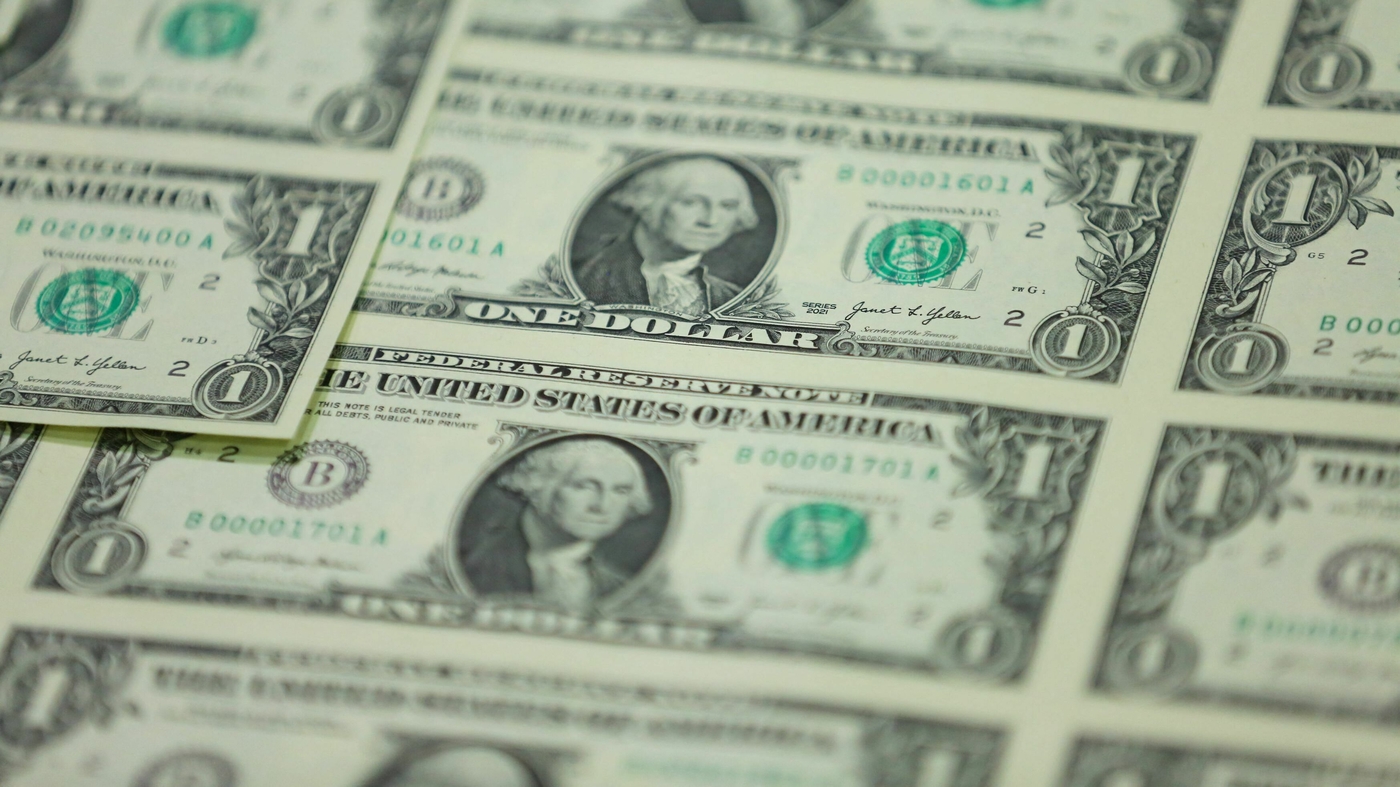The U.S. budget deficit ballooned in the first nine months of its fiscal year, both because of a sharp increase in government spending and a significant drop in tax revenues.
Andy Jacobsohn/AFP via Getty Images
hide caption
toggle caption
Andy Jacobsohn/AFP via Getty Images

The U.S. budget deficit ballooned in the first nine months of its fiscal year, both because of a sharp increase in government spending and a significant drop in tax revenues.
Andy Jacobsohn/AFP via Getty Images
The federal government’s deficit nearly tripled in the first nine months of the fiscal year, a surge that’s bound to raise concerns about the country’s rising debt levels.
The Treasury Department said Thursday that the budget gap from October through June was nearly $1.4 trillion — a 170% increase from the same period a year earlier. The federal government operates under a fiscal year that begins October 1.
The shortfall adds to an already large federal debt — estimated at more than $32 trillion. Financing that debt is increasingly expensive as a result of rising interest rates. Interest payments over the last nine months reached $652 billion — 25% more than during a same period a year ago.
“Unfortunately, interest is now the government’s fastest growing quote-unquote ‘program,'” said Michael Peterson, CEO of the Peter G. Peterson foundation, which promotes fiscal responsibility.
Why the deficit is surging
The deficit ballooned both because of a sharp increase in government spending and a significant drop in tax revenues.
Treasury officials blamed the falling revenues on reduced investment gains last year. The S&P 500 stock index, for example, fell nearly 20% in 2022, during a period of uncertainty about the economy. While the index has since rebounded, investors realized fewer capital gains last year, and paid less in capital gains taxes this year.
Overall, tax revenues between October and June were 11% lower than the same period a year ago.
At the same time, government spending jumped 10%. Spending on major health care programs such as Medicare and Medicaid rose sharply. Social Security payouts jumped 11%, thanks in part to an 8.7% cost-of-living adjustment for retirees and other recipients — the largest such increase in four decades.
The government has also paid $52 billion so far to cover deposits at three regional banks that failed this spring. That money will come from the Federal Deposit Insurance Corp.’s deposit insurance fund and a special assessment on other big banks.
Can surging deficits be sustained?
The government’s gusher of red ink brought renewed calls for fiscal restraint.
“We are projected to spend more on interest payments in the next decade than we will on the entire defense budget,” said Maya Macguineas, president of the Committee for a Responsible Federal Budget. “How can anyone possibly think this trend is sustainable?”
The recent showdown over the government’s debt ceiling brought little meaningful change in the fiscal outlook. A deal to avoid a government default imposed modest caps on discretionary spending, which is a relatively small part of the overall budget.
The ballooning deficit continues to spark political fights. Congressional Republicans have rejected any call for tax increases, while the White House has fought proposals to cut spending on major programs such as Medicare and Social Security.
Macguineas said all aspects of the federal budget should be on the table.
“We’re running off the rails at an alarming rate,” she said in a statement. “We need to do better.”
The Fitch bond rating agency warned in June that despite the country’s “exceptional strengths,” the nation’s AAA bond rating could be jeopardized by “governance shortcomings,” including “failure to tackle fiscal challenges.”

